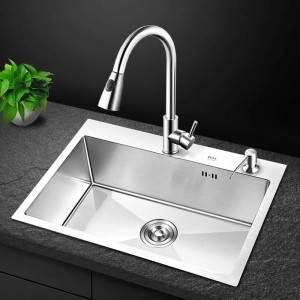Stainless steel kitchen sinks have become one of the most popular choices for modern kitchens due to their durability and long-lasting properties. They are iconic and reliable, but have you ever wondered how they are made? It turns out that the production of stainless steel kitchen sinks requires skilled craftsmanship, specialized equipment, and a thorough understanding of the production process.
To create a stainless steel kitchen sink, the first step is to select high-quality stainless steel sheets that are free from any defects. The sheets are usually 16 to 18 gauge in thickness, depending on the desired size and strength of the sink. The stainless steel is cut and formed into the shape of the sink, with the help of specialized equipment such as laser cutters, stamping presses, and hydraulic brakes.
After the basic shape is formed, the sink undergoes several manufacturing processes to add strength, functionality, and aesthetics. The sink is welded to join the edges and create a seamless appearance. Any rough edges or seams are then smoothed and polished to create a smooth surface finish.
The next step in the process is to add mounting clips and sound-deadening pads. The mounting clips are placed in the sink to allow for easy installation onto the countertop without any extra hardware. Sound-deadening pads are then added to the bottom of the sink to absorb and dampen any vibration caused by the running water.
Once the sink is fully formed and outfitted with mounting clips and sound-deadening pads, the final steps include adding accessories such as drain strainers, soap dispensers, and cutting boards. These accessories are integrated into the sink to provide added functionality and maximize convenience.
Before the sink is sold to the consumer, it undergoes a series of quality control measures to ensure it is free from any defects or flaws. This includes testing for leaks, checking the finish and fit, and ensuring all accessories are working properly.
To summarize, the production of stainless steel kitchen sinks is a complex process that requires skilled craftsmanship and specialized equipment. It involves selecting high-quality materials, cutting and forming the steel sheets, adding strength and functionality through welding and mounting, and adding finishing touches like accessories. Quality control measures ensure the final product meets standards and is free from defects. The result is a beautiful and long-lasting stainless steel sink that will withstand the test of time and the daily wear and tear of a busy kitchen.
Post time: May-11-2023
